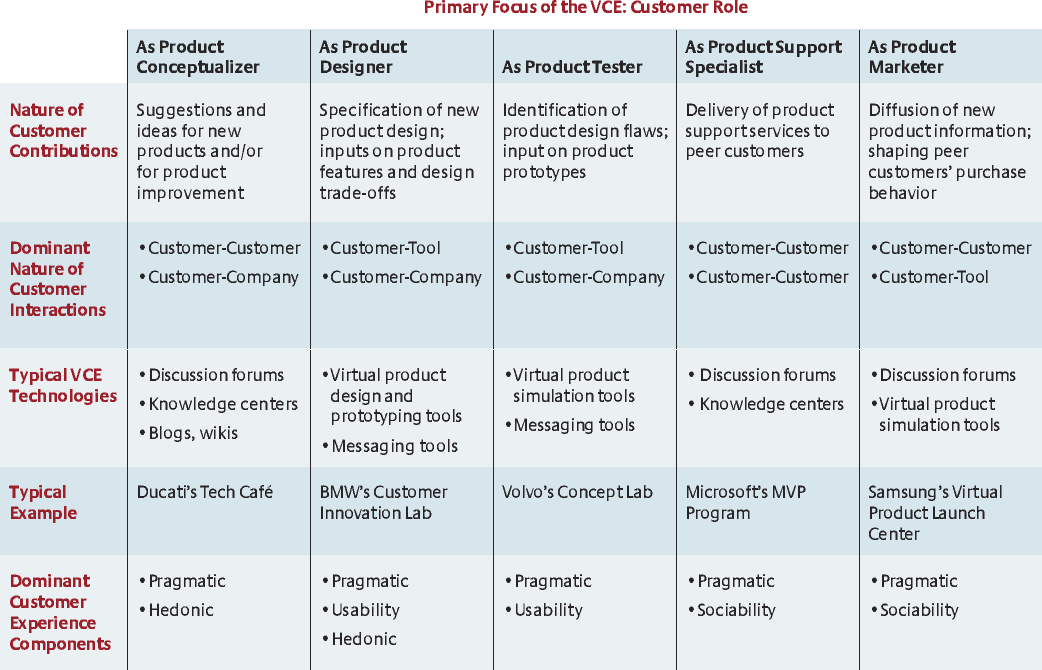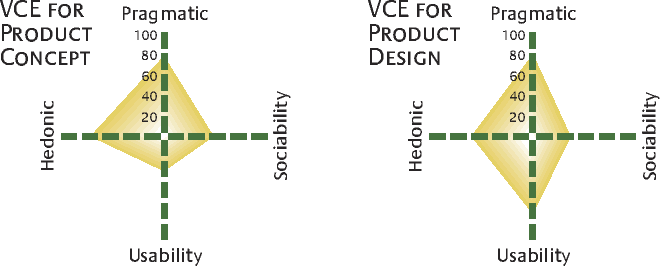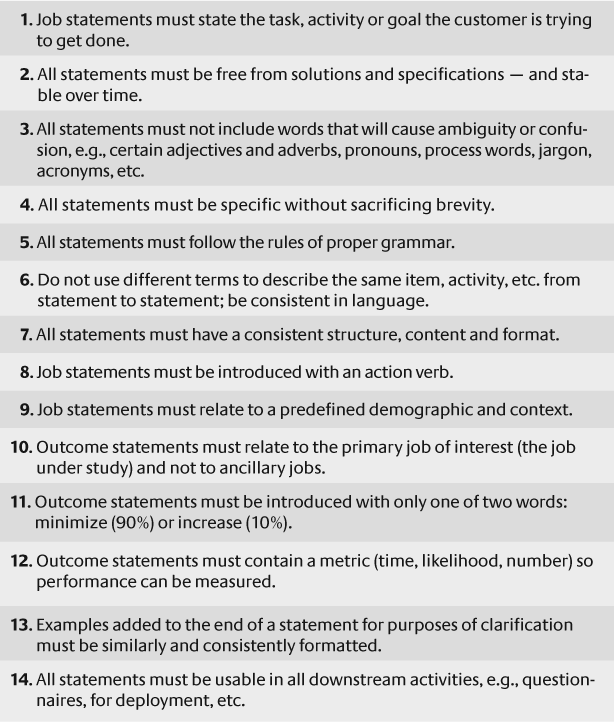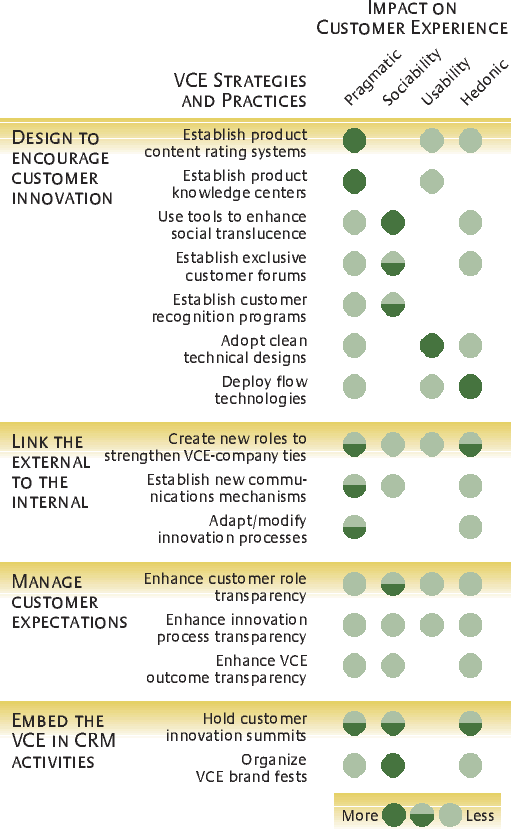How to Profit From a Better Virtual Customer Environment
The benefits of engaging customers in product development, product support and related activities are increasingly visible. Having the right technology-based system can enhance the customer experience and help companies improve both their innovation and customer relationship management capabilities.
In recent years, many well-known companies, including Microsoft, Cisco, Nokia, Volvo and Nike, have forged closer links with customers in the areas of innovation and value creation by establishing technology-based customer forums. These forums, known as virtual customer environments, range from simple online discussion groups to more sophisticated product prototyping centers.1 In many cases, companies incorporate organizational mechanisms to integrate customer innovation roles with internal product development systems and processes.
The benefits of engaging customers in product design and development, product support and other related activities are increasingly visible. By interacting with customers, for example, Nokia Corp. has been able to tap into innovative design concepts. Similarly, AB Volvo has been able to accelerate product development by involving customers in virtual product concept tests. Microsoft Corp., meantime, has realized considerable savings by embracing “expert” customers as partners in providing product support services to other customers.2 Such advantages, combined with the availability of powerful and inexpensive information technologies, help explain the rapid growth of VCE initiatives in both the United States and Europe.
Our research indicates that VCE initiatives can offer important (and often hidden) benefits beyond the innovation outcomes. (See “About the Research.”) Specifically, customer interactions in VCEs can shape their relationships with the company as well as with the product or brand. Yet many companies treat their virtual environments strictly as an innovation platform and pay limited attention to other issues. We think that companies that ignore the broader impact of the customer’s experience are overlooking an important dimension — something that they may not realize until it is too late.3
Managers can benefit by developing a more thorough understanding of the nature of customers’ experiences in a VCE and the implications for both innovation and customer relationship management. We offer a framework to evaluate customers’ VCE experience profile and suggest a set of strategies and practices to promote appropriate customer experiences. To understand the experiences, let’s examine the roles they play in the VCE.
Customer Roles in Virtual Customer Environments
Virtual customer environments can be designed to support five different customer roles in innovation and value cocreation: product conceptualizer, product designer, product tester, product support specialist and product marketer.4(See “The Types of Virtual Customer Environments.”)
The Types Of Virtual Customer Environments
Product Conceptualizer
Companies can encourage customers to interact among themselves to generate and advance product improvement and new product ideas. For example, Ducati Motor Holding S.p.A., the Italian motorcycle company, has implemented a virtual space called Tech Café where customers share design ideas (including detailed engineering drawings) for customizing and improving motorcycles; some of the suggestions have been incorporated into Ducati’s next generation of products. Similar mechanisms have been employed by Hallmark Cards Inc. and other companies to get customers to conceptualize products and channel ideas into the product development pipeline.
Product Designer
Customers can also be product designers and design their own versions of the “ideal” product using virtual prototyping tools and design tool kits provided in the VCE.5 For example, Bayerische Motoren Werke AG has operated its Customer Innovation Lab by giving customers online design tools to develop their own ideas (particularly related to telematics and driver-assistance systems). Similarly, both French automaker PSA Peugeot Citroën S.A. and D. Swarovski & Co., an Austrian producer of crystal, have employed such design tools to facilitate customer design efforts.
Product Tester
The application of virtual product technologies has also been extended to engage the customer in product testing. For example, both Volvo and Audi AG have implemented virtual reality tools to involve customers in product concept testing.
Product Support Specialist
Perhaps the most common role for customers is supporting other customers as product support specialists. This allows them to leverage their product-related knowledge and expertise to extend support to peers.6 Technology companies such as HP, Novell, Cisco and Microsoft have been at the forefront of this area. Further, industry organizations such as the San Carlos, California-based Consortium for Service Innovation have been pursuing projects focused on enhancing the customer’s role in product support through the innovative application of knowledge-based tools and technologies in VCEs.7
Product Marketer
Some companies have also leveraged the expertise of customers in product marketing activities carried out in VCEs. They are able to pass along information about new products and shape peer perceptions through dialogue and discussions. Further, VCEs provide an effective venue in which customers may learn about new products. Both Korea’s Samsung Group and Japan’s Suzuki Motor Corp., for example, have experimented with virtual product launch centers that employ interactive product simulation technologies and, in the process, engage customers in product marketing.8
Individually, each of the customer roles has a lot to offer to companies. However, some roles have more relevance to some companies than to others. In fact, most companies pursue VCE initiatives that are focused on a single role. For example, while Microsoft’s Most Valuable Professional program concentrates primarily on product support activities, Ducati’s Tech Café focuses mainly on developing product concepts. Depending on the customer innovation role, the nature of the customer interactions and the technologies used in the VCE will vary — and thus the nature of customers’ experience in the virtual environment will vary as well. However, before we relate the customer role to the experience, we need to define customers’ VCE experience.
The Customer Experience
The customer experience in a VCE is made up of four components: pragmatic experience, sociability experience, usability experience and hedonic experience.9 These components reflect three underlying contextual characteristics: Customer interactions involve product-related knowledge; they occur in a social or community context; and they are facilitated or mediated by different types of information technologies.10
Pragmatic Experience
Most customers who visit or participate in VCEs do so to acquire information about a product, its underlying technologies or its usage. The pragmatic component relates to customers’ experience in realizing such product-related informational goals in the VCE (for example, their perception of the quality of information acquisition processes). Note that there are multiple ways for customers to achieve such goals — interacting with peer customers and company representatives, searching product knowledge centers or experimenting with product prototyping tools — and depending on their approach, their pragmatic experiences would vary.
Sociability Experience
Interactions in a VCE often enable customers to perceive themselves as members of a group or community, and the underlying social and relational aspects of such interactions form the sociability experience of the customer. Thus, the sociability component emphasizes the importance of community dialogue and the social policies (or rules of engagement) that frame such dialogue. The promotion of a shared social or community identity in VCEs has been shown to contribute to positive sociability experience. As one customer commented, “I really like the camaraderie and the shared understanding that has evolved over here [in the VCE] and the constant give-and-take with these folks has led to some very interesting experiences for me.”11
Usability Experience
In a VCE, information technology mediates customer interactions. The quality of the human-computer interactions defines the usability experience.12 Regardless of whether the technologies used are simple (for example, online discussion boards) or more complex (for example, 3-D product simulation tools), the ease with which customers can interact and perform tasks shapes their overall experience. Thus, it is important to consider the learning curve for customers.
Hedonic Experience
Customers’ interactions in the virtual environment can also be mentally stimulating or entertaining, a source of pleasure and enjoyment. The hedonic component captures this dimension. It can encompass both the interaction with other customers and with tools and technologies. Consider the following comment from a customer: “I have always enjoyed solving technical puzzles and my interactions [in the VCE] have given me numerous opportunities to indulge in such pursuits that are very satisfying.”13
Together, the four components provide a comprehensive view of the experience a customer participating in a VCE can have. However, based on the nature of the customer’s interactions and value cocreation activities, some components are likely to be more important than others.
In one of our studies, we examined the virtual customer environments at four companies: a software company, a consumer electronics company, a high-technology company and a technology services company. The VCEs in the software company and the consumer electronics company encouraged customers to be product support specialists, while those in the high-technology company and the technology services company encouraged customers to conceptualize new products and services. Based on a survey of customers who visited these virtual environments, we evaluated the average customer experience profiles of the four companies and found some interesting results.14 In the first two companies, the customer experience profiles were skewed toward pragmatic and sociability experience components, while in the latter cases the emphasis was on pragmatic and hedonic components. These differences underline the different types of customer interactions. VCEs oriented toward product support activities tend to feature lively discussions and debates that leverage the expertise of the entire community and make them better able to address individual customers’ product-related problems. By contrast, virtual environments that focus on helping customers become product conceptualizers tend to be more stimulating for participants as product improvement ideas are developed, shared and improved.
We can identify “typical” customer experience profiles for five different types of VCEs based on the kind of participation and value cocreation they encourage. (See “Typical Customer Experience Profiles of Different Types of VCEs.”) We found that the pragmatic component is important in most situations, since product-related knowledge and learning are fundamental in all roles. The sociability component becomes more important in roles that depend more on community involvement (for example, in product support and product marketing) than in contexts that emphasize customer-tool interactions (for example, in product design and product concept testing). Similarly, as technological sophistication of the VCE facilities increases, the importance of usability increases as well (for example, in product design and testing, virtual reality and simulation tools are central).
Typical Customer Experience Profiles Of Different Types Of Vces
Typical Customer Experience Profiles of Different Types of VCEs
Based on the nature of customer’s interactions and value co-creation activities in the virtual customer environment, the four components of customer experience would assume different levels of importance. We identify the typical customer experience profile for the five different types of VCEs on the basis of the kind of value co-creation they encourage. Customer experience components are shown here on a scale of 1-100.
Thus far, we have highlighted “typical” experience profiles. Each company will need to examine its own circumstances and weigh the unique product and customer context in order to decide which customer experience profile is most appropriate. A clear understanding of this — specifically, the relative importance of the different experience components — will help companies tailor their VCE strategies and practices. However, first we will consider the impact of customer experience.
The Effect of Customers’ VCE Experience
The customer interaction experience has two types of effects. (See “Antecedents and Consequences of Customer Experiences in VCEs.”) The first relates to the immediate context of the experience and is succinctly captured in this comment by a customer: “I have been a visitor [to the VCE] for the last two years or so and I have generally enjoyed coming here and using my expertise to help others. … As long as it is enjoyable, I plan to continue doing this.”15 Indeed, our studies indicate that customers who express positive experiences are twice as likely to remain involved and increase both the intensity and the quality of their contributions in the VCE.
Antecedents And Consequences Of Customer Experiences In Vces
Antecedents and Consequences of Customer Experiences in VCEs
To manage and facilitate the creation of positive customer experiences in virtual customer environments, companies will need to devise specific complementary strategies and processes. Positive customer experience in the VCE can translate into valuable primary and secondary outcomes for the company relating to both innovation and customer relationship management.
The second effect has a much broader scope, relating to relationships customers have with both the product and the company. We found that most customers attribute their VCE experience (good or bad) directly to the company connected with that initiative. Indeed, it shapes their perceptions about both the company and the product. Interestingly, we also found that customers’ experiences had a greater effect on their views toward the company than it did on their future participation in innovation activities in the VCE. The effect of the customer experience also shaped purchase intentions and decisions. For example, one customer noted that the primary reason he decided to buy Palm Inc.’s Treo 650 smart phone over another product “was the active customer forum associated with it and the good experience I had while I visited them during my initial exploration.”
In general, we found that positive (negative) customer experiences led to positive (negative) outcomes with regard to both innovation (intensity of customer value cocreation) and customer-company relationships. However, more significantly, we found that the difference between customer expectations and the actual experience on the four components was what really mattered. Further, there were threshold levels for each of the components beyond which a more positive experience did not necessarily translate into more positive outcomes. For example, if customers considered something especially important (for instance, sociability), a slight dip in that component had a magnified effect on customer attitudes. However, if something was considered relatively minor (say, usability), even a highly positive rating did not translate into a more favorable view of the product or company.
Thus, the goal is not to maximize all four components of the customers’ VCE experience — this may be too costly and may not even be effective. Instead, it is to create positive experiences beyond what is expected, particularly in those areas that are important within the given customer innovation context.
Strategies and Practices to Enhance the Customer Experience
Based on our research, we developed four sets of strategies and practices that companies can adopt to enhance customer experiences in VCEs. Different companies will choose different approaches depending on their circumstances and what they are trying to accomplish. (See “Mapping VCE Strategies to Customer Profiles.”)
Mapping Vce Strategies To Customer Profiles
Mapping VCE Strategies to Customer Profiles
Companies can adopt four sets of virtual customer environment strategies and practices with different levels of impact on the four components of customer experience. Different companies will choose different portfolios of these strategies and practices depending on their circumstances and what they are trying to accomplish in the VCE.
Design to Encourage Customer Innovation
Companies can create richer innovating environments by incorporating key design features into their VCEs. We identified several features that can improve customer experiences, including content rating systems, product knowledge centers, social translucence, customer recognition programs, exclusive customer forums, clean technical designs and flow technologies.
Rating systems.
Having enough product-related content in the VCE is important not only to advance customer innovation capabilities but also to enhance learning. Companies such as Microsoft are experimenting with product content rating systems — for example, peer ratings and other social metrics that help customers gauge the depth and accuracy of product-related knowledge in the interactions.16 Similarly, new semantic visualization tools have been created that allow customers to identify patterns in customer conversations and navigate toward the content-rich part of those conversations.17
Product knowledge centers.
Companies can also create product knowledge centers that can feed customers the right knowledge at the right time. Such centers can offer virtual product simulation tools that allow customers to acquire deeper product knowledge. Samsung, for example, lets customers do a virtual test-drive of its products.
Social translucence.
Design features that provide customers with better social cues — that is, add to the social translucence — offer richer social experiences and permit richer customer discussions. Both International Business Machines Corp.’s Social Computing Group and the MIT Media Lab’s Sociable Media Group have developed tools in this area.18 The tools help customers follow social conventions and participate more effectively in group interactions. For example, in discussions of product improvement ideas, they identify the active and passive participants, identify the opinion leaders, and show how the ideas evolve, thereby helping customers make social inferences that facilitate coherent interactions and progress toward common goals.
Customer recognition programs.
Companies including IBM, HP and Microsoft have instituted programs that confer titles and awards upon customers taking part in VCEs. For example, every year Microsoft selects Most Valuable Professionals from customers who contribute to the product support activities through its VCE. Customers value these titles because they come from a customer community they identify with. Our research shows that such programs make positive differences in customers’ sociability experience. For example, Microsoft MVPs say that while the recognition is personally satisfying, it also brings them closer to the customer community in the VCE and deepens their sense of belonging and responsibility.
Exclusive customer forums.
Companies can also create elite customer forums within their VCE that give members a sense of exclusiveness and add to their sociability experience. Hallmark divides customer contributors based on their demographic profiles and assigns them to different forums. Similarly, Microsoft has created forums specifically for customers who have been awarded the MVP title; in contrast to other customer forums, these forums are involved in a wider range of collaborative innovation activities. Such gated forums not only permit companies to have deeper customer engagement but also provide customers with a stronger sense of social identity, which in turn leads to more positive experiences.
Clean technical designs.
Having a simple, easy-to-use customer interface combined with fast and highly intuitive navigation features can be a significant asset in a VCE. We found that a clean technical design has positive implications for the usability experience as well as for the pragmatic and hedonic components.
Flow technologies.
Yet another design element involves the incorporation of so-called flow technologies: virtual reality and simulation tools that combine technological and human interactivity to produce stimulating experiences for customers.19 Volvo’s Concept Lab combines clean design and flow technologies to give customers a unique interactive experience. The success of this design is evident in the quantity and quality of ideas and suggestions the company has received from customers worldwide, many of which have found their way into the product development pipeline.20
Link the external to the internal
Companies that want to benefit from their customers’ creativity need to adopt strategies that link their external customer innovating environments with internal product development teams.
One way to achieve this is to establish new organizational roles to connect the virtual customer environment with internal product teams. For example, Microsoft has specially designated employees called “buddies” who play such a bridging role. Buddies interact directly with customer contributors in the VCE and ensure that their inputs are fed to the appropriate people within the organization. This also allows the company to participate in the conversations that occur in the external innovation forums and contribute to the customers’ hedonic experience. Our research shows that customers place a high value on their interactions with their buddy. As one Microsoft customer told us, “[my] interactions with the buddy have been extremely satisfying — they are very knowledgeable and I have really enjoyed trading ideas with them.”
Another way to connect the VCE with internal product teams is to create new communication mechanisms. Some of the companies we studied have used formal communication methods such as white papers to provide vision and direction to customers’ innovation and value cocreation activities. However, informal mechanisms can be equally important. For example, Germany’s SAP Aktiengesellschaft holds “ask the expert” discussions in its VCE that bring together company insiders and customers to discuss a wide range of product and technology issues. Companies have also started using blogs and wikis to facilitate informal conversations between internal experts and customers. A good example is Microsoft’s Channel 9 — an online forum that incorporates technologies such as blogs, podcasts, vodcasts and wikis to promote open conversations between customers and Microsoft employees.21
A third way for companies to integrate their VCE initiative into their overall innovation strategy is to adapt or modify their product development processes. This might include instituting new processes to respond to customer ideas and suggestions, to select appropriate innovation projects for the VCE, and to manage intellectual property rights. It could also include managing the risks associated with the VCE initiative and revamping the culture of product development teams to include customers as partners in innovation. As one manager who had led his company’s VCE initiative told us, “We had not given much thought to these [processes] early on … however, some of these issues eventually took on a life of their own, and as we discovered they were issues not only for us but for our customers as well.” Indeed, we found that instituting appropriate processes to accommodate the VCE activities and their outcomes can go a long way toward enhancing the customer experience and ensuring returns to the company.
Manage customer expectations.
An important issue in establishing an effective collaborative innovation process is managing customer expectations and minimizing potential negative outcomes. This requires a high degree of transparency. Our studies indicate that there are three types of transparency: role transparency, process transparency and outcome transparency.
Role transparency has to do with customer perceptions about the specific role or roles they are playing in the VCE. Process transparency relates to the clarity of specific innovation processes — the nature of the processes, who is involved, the time sequence, and how the processes relate to the company’s other business processes. Outcome transparency involves keeping customers informed about what is happening to their inputs.
Clarity about customer roles, innovation and value creation processes, and outcomes can reduce the potential for misplaced customer expectations regarding their involvement and lead to a more positive customer experience. Strategies to enhance transparency vary according to the VCE context. For example, some companies have tried to enhance clarity by making customer roles and processes explicit through published policies and guidelines. Open discussions with the customer community about customer involvement may also help clarify perceptions and expectations. Maintaining archives of customer interactions is another useful practice. Still another is periodically reporting to customers on the status of product improvement ideas that came from the VCE.
Making explicit the company’s policies regarding intellectual property rights is critical for enhancing outcome transparency. Microsoft, for example, has instituted a Community Solutions Content program that allows Microsoft MVPs to author product support content that is hosted within the VCE as part of the company’s product knowledge base but “owned” by the community. As one Microsoft manager told us, the key point is to bring clarity to “who owns what intellectual asset” and to communicate that effectively to the customer community. Strategies and practices founded on the tenets of good customer relationship management can lead to positive customer experiences in the VCE.22
Embed the VCE in customer relationship management activities
The final strategy companies can use to improve customer experiences in the VCE involves embedding their VCE initiatives inside the company’s overall customer relationship management framework.
This lets the company enhance the customer experience by finding synergies with a customer’s other product-related interactions (for example, offline product events).
An effective way to do this is to arrange a customer innovation summit that brings together selected customers from the VCE and company product development teams and managers. Microsoft, for example, invites its MVPs to a two-day annual event at the company’s Redmond, Washington, campus. The event features technical sessions as well as opportunities for customers to connect with other MVPs, build relationships with managers and provide feedback to Microsoft product development teams. Other companies have pursued similar practices. BMW, for example, invited 20 customer innovators who contributed to its Customer Innovation Lab to meet with engineers in Munich. Ducati includes contributors to its Tech Café at an annual gathering focused on next-generation products.
Another mechanism is to organize “VCE brand fests” — product marketing activities that begin in the virtual environment and continue through offline events held in areas where customers live. Samsung, for example, has started pursuing such strategies in an effort to find synergies between VCE activities and its overall approach to brand management. Although these kinds of practices may not be appropriate or feasible for all companies, they do suggest potential opportunities to enhance the customer experience when customers return to the virtual environment later on.
THE STRATEGIES AND PRACTICES that we have presented enhance the customer experience in the VCE to varied extents. What’s more, the costs of implementation can vary widely. Therefore, companies need to be careful about selecting and implementing a portfolio of strategies and practices that meet the needs of the types of customers they want to engage in value cocreation. Designing and implementing the right system can lead to positive outcomes in terms of both innovation and customer relationship management, and this highlights the broader message from our research: Companies should view their VCE initiatives as an integral element of their overall innovation and customer strategy.
References (22)
1. For a more in-depth discussion of virtual customer environments, see S. Nambisan, “Designing Virtual Customer Environments for New Product Development: Toward a Theory,” Academy of Management Review 27, no. 3 (2002): 392-413. Other recent publications that have described such virtual customer forums for innovation include: C.K. Prahalad and V. Ramaswamy, “The Future of Competition: Co-creating Unique Value With Customers” (Boston: HBS Press, 2003); M. Sawhney, G. Verona and E. Prandelli, “Collaborating to Create: The Internet As a Platform for Customer Engagement in Product Innovation,” Journal of Interactive Marketing 19, no. 4 (autumn 2005): 4-17; S. Nambisan and R. Baron, “Interactions in Virtual Customer Environments: Implications for Product Support and Customer Relationship Management,” Journal of Interactive Marketing 21, no. 2 (spring 2007): 42-62.
2. Author’s interview with Microsoft MVP program managers in 2004.









